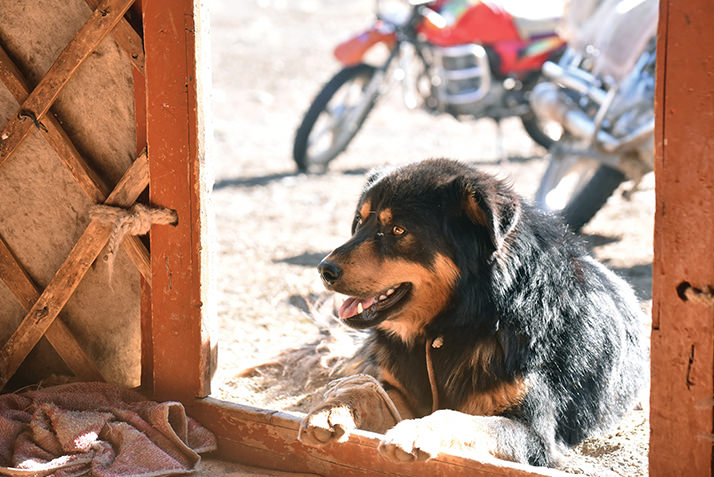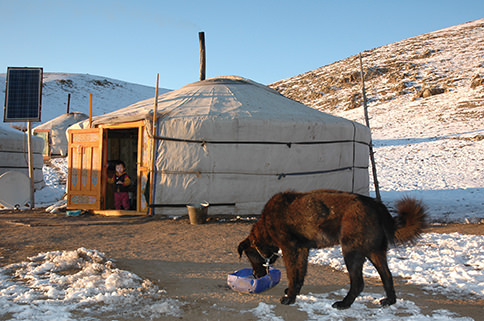Nomadic Landrace
To restore an ancient way of life for Mongolian herders, a Connecticut-based NGO is reintroducing a special type of dog to safeguard livestock.
Your dog may be able to catch a Frisbee, but can it preserve an ageless culture in the wilds of Mongolia? Scientists at the Mongolian Bankhar Dog Project, a small NGO operating in Mongolia, hope the dogs they’re raising can do just that.
The MBDP breeds and raises Bankhar, a primal canine landrace, to once again serve as livestock guardian dogs for nomadic herders across the rugged landscape of north-central Asia. This nomadic lifestyle, along with the Bankhar, was nearly wiped out during Mongolia’s decades as a Soviet satellite state, when the ruling communist party sought to modernize and industrialize Mongolia and suppressed nomadism. At the same time, Bankhar fur became popular material for coats fashionable in Moscow, further reducing the dog’s population.
The benefits of supplying Bankhar dogs to locals appear to be twofold: The herders won’t lose livestock to predators, and the predators—some endangered—won’t lose their lives. Without livestock-guarding dogs, the herders often gun down or poison the wolves, snow leopards, brown bears, foxes and eagles that hunt a herder’s sheep, goats and horses.
However, there is also a third benefit: the preservation of the long-held tradition of nomadic herding in Mongolia.
“About a third of the Mongolian population still lives as herders, and predation can result in herders losing up to 40 percent of their annual income,” says Greg Goodfellow ’12, a project scientist with MBDP.
Goodfellow joined the organization after hearing about a 2015 TEDx Connecticut College talk by MBDP founder Bruce Elfström. Goodfellow majored in biology, but says his professional path has also been affected by his minor in philosophy.
“I’ve always been curious about what it means to ‘live a good life,’” Goodfellow says.
“For me, in addition to doing what makes you happy, a ‘good life’ also entails trying to make an impact greater than yourself. This is one of the things that drew me to conservation biology—there are ample opportunities to improve life for both nonhuman animals and humans because conservation issues often involve both.”
That’s certainly evident in Mongolia, where even a single predator like a snow leopard can kill nearly half of a herder’s flock over the course of a season. That’s a huge loss for a herding family making an average of $3 a day.
“For those with small herds, this can be the difference between continuing a lifestyle that has been passed down through generations and having to move to the capital, Ulaanbaatar, where job opportunities are few and far between,” Goodfellow says.



